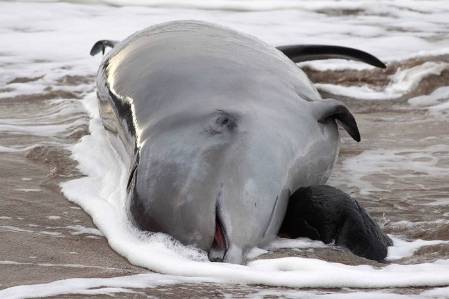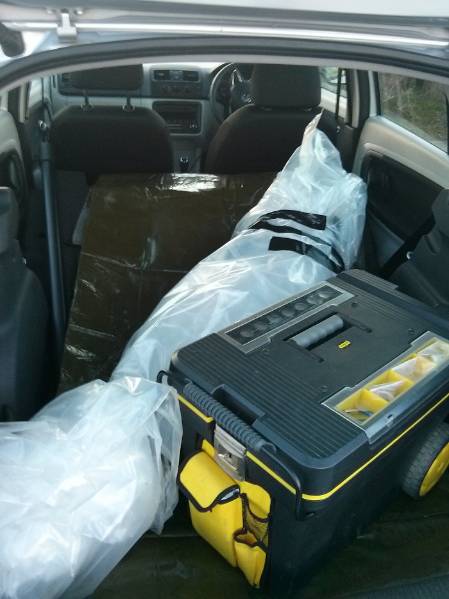We take a diversion this week from the Microverse and our newest project, Orchid Observers, to introduce one of the projects that wouldn't get anywhere without the general public reporting sightings, the UK Cetacean Strandings Investigation Programme (CSIP). Cetaceans are the infraorder of marine mammals that includes whales, dolphins and porpoises, and the Museum has been involved in recording their strandings on UK shores for over a century. So it's over to Rebecca Lyal, Cetacean Strandings Support Officer at the Museum, to introduce the project and what she does as a part of it.
Warning: You may find some of the images that follow upsetting as they are of stranded and injured animals.
The CSIP was created in 1990 to unite the Museum with a consortium of interested parties to formally investigate the stranding of any cetacean, seal, shark and turtle upon the UK coastline. The Museum has actually been recording strandings since 1913 when the Crown granted it scientific research rights for the collection of data on the 'fishes royal'.
The first recording was a Cuvier's beaked whale that stranded in Northern Ireland during the summer of 1913. Since then there have been over 12,000 logged reports of whale, dolphin and porpoise strandings, that have ranged from the mighty blue whale to the common harbour porpoise, and even a rogue beluga whale found in Scotland.
A stranded Cuvier's beaked whale.
(Photo credit: Department of Environment, Marine Divison, Northern Ireland)
On the eve of submitting this very blog entry I was contacted via London Zoo - a CSIP partner - with a report of a common dolphin found dead after being stranded in Burnham-on-Sea in Somerset. As soon it was confirmed that someone could help me move an animal weighing upwards of 100kg I jumped into the car and followed the afternoon sun westwards.
Common dolphin found stranded in Burnham-on-Sea.
A few hours later I arrived at a blustery Sedgemoor council depot where amid a multitude of dustbins and trucks was the dolphin. It was female, roughly 170 cm in length, and appeared in 'good condition' (i.e. it had suffered minimal decomposition), the latter being crucial to making an accurate assessment for the cause of death.
For animals smaller than around 2 metres in length, I can transport them to London Zoo for a post mortem in the back of the car (with the back seats pushed down of course…) so our first job was to wrap the specimen in a large polythene bag to protect it from immediate damage and shield the car from any leaking wounds.
With a fair amount of careful heave, ho-ing she was settled in the boot and resembling a slightly malformed Christmas cracker. Like with any stranding, I am extremely grateful for those who help with this strenuous and often fairly messy part, so my sincere thanks go to those at Sedgemoor council who assisted with this collection.
Once wrapped in polythene, the dolphin can be safely transported to London Zoo for an autopsy.
Upon returning to London, I took the dolphin to the fridges at London Zoo where she'll be taken for a post mortem. During this procedure, a sample is taken of each organ, as well as one of the ribs and any unusual parasites found. It is also examined for unusual markings or damage that could have been caused by predation or unnatural damage. Watch this space for an update on the results…
How you can get involved
If you find a dead, stranded cetacean, seal, shark of turtle, please contact the CSIP hotline (0800 6520 333) and leave your name, number and as much detail about the stranding as possible (location and date found, species - if you know it - and the overall length and condition of the animal.)
I hope to provide a guide to identifying different species in a future blog post.
Rebecca Lyal is the Museum's Cetacean Strandings Support Officer, one of the partnership organisations of the CSIP. She completed her undergraduate degree in Marine Biology at Newcastle University and joined the Museum as the strandings officer in August 2014.
Jade Lauren





